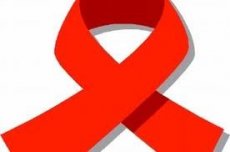New publications
AIDS: a thirty-year war of hope
Last reviewed: 30.06.2025

All iLive content is medically reviewed or fact checked to ensure as much factual accuracy as possible.
We have strict sourcing guidelines and only link to reputable media sites, academic research institutions and, whenever possible, medically peer reviewed studies. Note that the numbers in parentheses ([1], [2], etc.) are clickable links to these studies.
If you feel that any of our content is inaccurate, out-of-date, or otherwise questionable, please select it and press Ctrl + Enter.

On June 5, 1981, American epidemiologists reported a strange case involving five young gay men in Los Angeles: all of them seemed healthy, but suddenly fell ill with pneumonia. Two died.
It later emerged that the men had fallen victim to a new virus that has now claimed more lives than the Second World War. The disease, initially called the gay plague, has permeated all levels of society.
“AIDS has changed the world, there is no doubt about it,” says Michel Sidibé, executive director of UNAIDS, who is organizing a major international forum dedicated to the 30th anniversary of the first diagnosis (the conference will be held in New York on June 8–10). “A new social contract has been concluded that has never existed before.”
The cause of the disease was identified in 1983 by French doctors. They isolated a pathogenic organism that became known as the human immunodeficiency virus. It is transmitted through sperm, vaginal secretions, breast milk, and blood. HIV hijacks key cells of the immune system, destroying them and simultaneously forcing them to reproduce themselves.
For several years, the infection does not produce symptoms, but during this time the immune system becomes so weakened that the risk of developing tuberculosis, pneumonia and other diseases becomes extremely high.
The scientists' successes have given hope that a vaccine will definitely be found - after all, we managed to defeat smallpox and polio. But the world is still waiting. The virus has proven to be surprisingly capable of mutations.
The first good news came in 1996: an effective drug had finally been found. It lowered the level of HIV in the blood below detectable levels, but it was not a panacea and had many side effects. Unfortunately, this drug and the ones that followed were extremely expensive, and only residents of rich countries could afford them.
At one time, US President George Bush and Microsoft CEO Bill Gates established the Global Fund to Fight AIDS, Tuberculosis and Malaria. Thanks to it, five million people living in low- and middle-income countries have already extended their lives. Unfortunately, this is a drop in the ocean. According to UNAIDS, today 10 million people are waiting for the fund's help, and by 2015 (by which time the UN wants to achieve "zero new infections, zero discrimination, zero deaths") there will be 13 million, which means another $6 billion. Without the participation of China and other rapidly developing countries, these unfortunate people cannot be saved.
"We have to stop the spread of the virus, otherwise there will be no way out of the epidemic, no treatment will be enough," emphasizes Seth Berkley, head of the International AIDS Vaccine Initiative. Today, there are only two sufficiently effective methods of prevention. First, circumcision reduces the risk of infection in men by two-thirds. Second, taking antiretroviral drugs by a heterosexual couple prevents transmission of the virus between partners in 96% of cases. Vaginal and anal prophylactic gels are also being developed.
Finally, some dry UNAIDS statistics for 2009. Since 1981, more than 60 million people have been infected, almost half of whom died from AIDS-related illnesses. In 2009, 1.8 million died, a quarter of them from tuberculosis.
More than two-thirds of HIV-infected people live in sub-Saharan Africa, with 5% of the continent's adult population carrying the virus.
In 2009, 2.6 million new cases of HIV infection were registered (in 1999 - 3.1 million). About 5.2 million people in low- and middle-income countries had access to antiretroviral therapy in 2009 (in 2004 - 700 thousand).
About 2.5 million people under the age of 15 are infected. In 2009, 370 thousand babies were born with HIV.
16.6 million young people under 18 have lost their parents to AIDS.
Number of infected by region: Sub-Saharan Africa - 22.5 million, South and Southeast Asia - 4.1 million, East Asia - 770 thousand, Central and South America - 1.4 million, North America - 1.5 million, Western and Central Europe - 820 thousand, Eastern Europe and Central Asia - 1.4 million, Caribbean - 240 thousand, Middle East and North Africa - 460 thousand, Oceania - 57 thousand.
